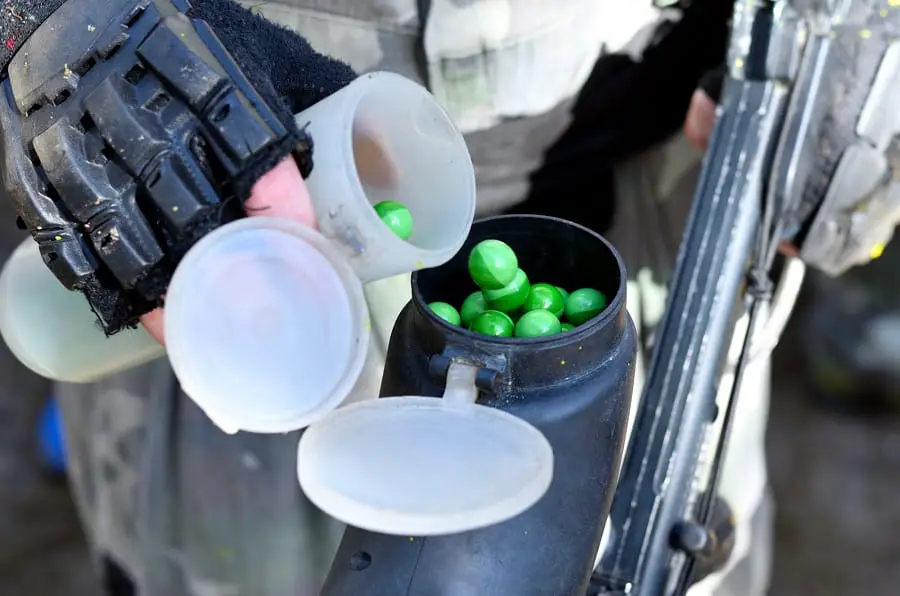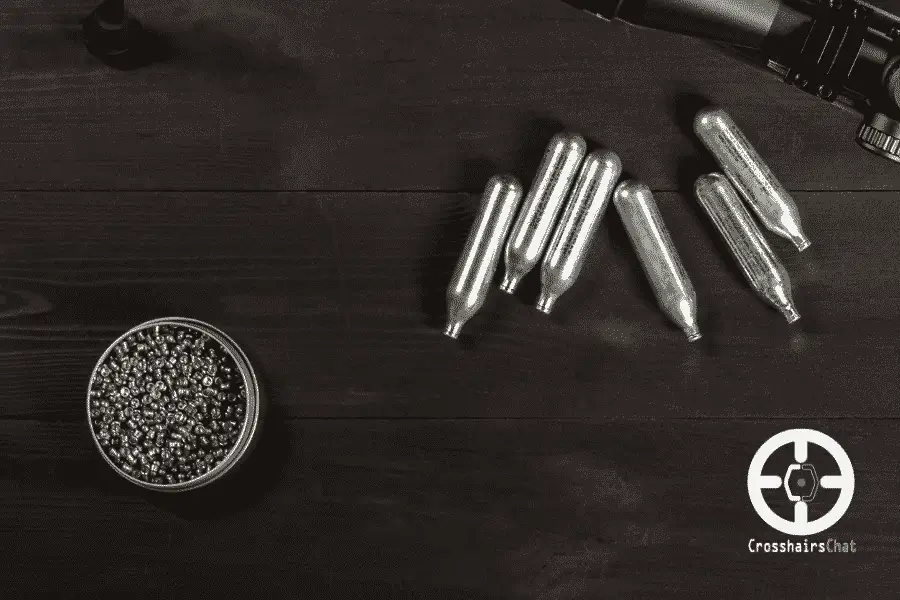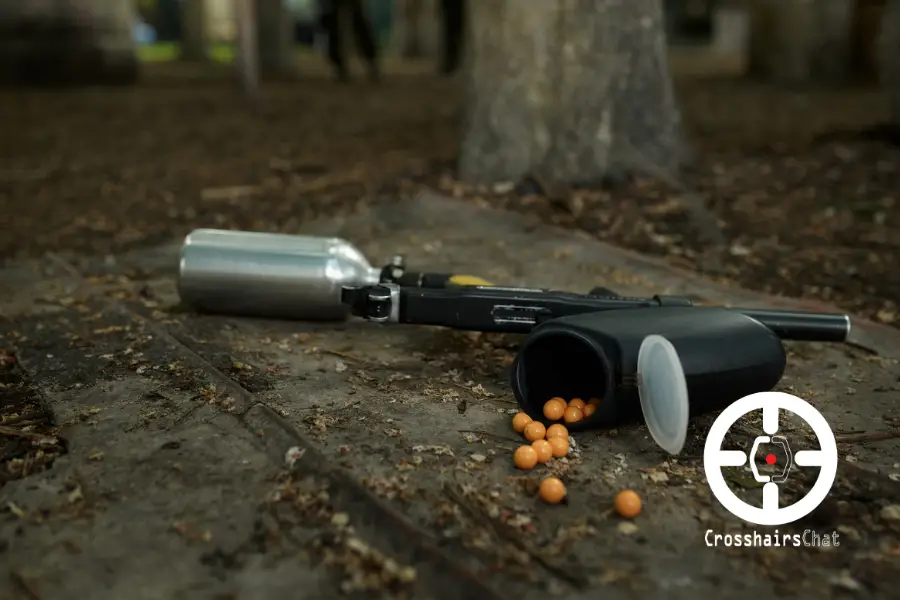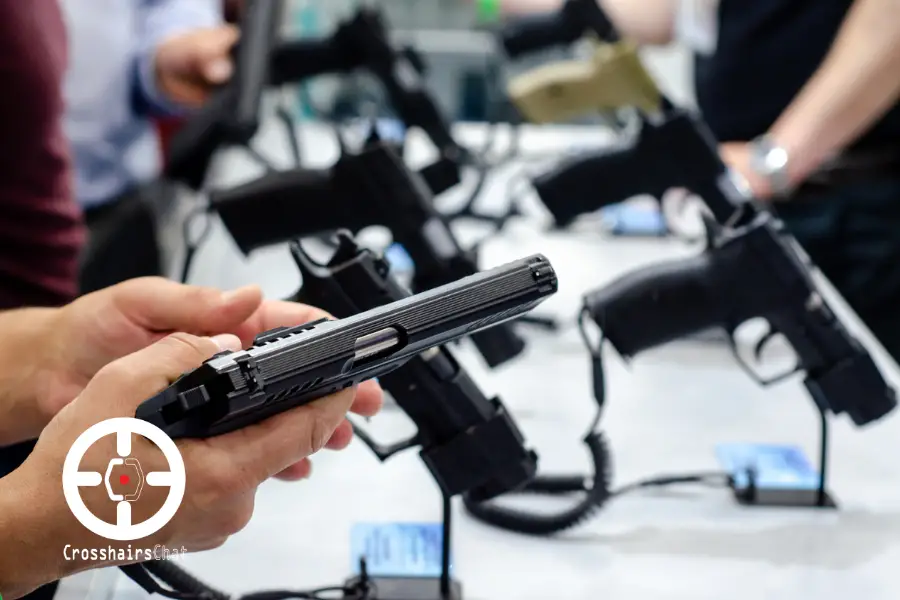The growing popularity of paintball guns has made it almost impossible for people to stay away from them. These paintball markers are only becoming more and more popular.
The main reason is the gun’s advanced features which attract most young individuals. If you just want to have fun with your buddies or for extra means of safety for your house, paintball guns are the equipment for you.
However, the concern you might have about these guns is how fast they shoot. The majority of people believe that paintballs travel as fast as bullets. But is this the reality? Read on to find out.
How Fast Do Paintball Guns Shoot in FPS and MPH?
The standard measurement of paintball speed is in feet per second (FPS). The main reason for measuring most guns in fps is the short range of markers.
With most traditional paintball markers, you can shoot up to 300 feet per second. However, most paintball fields don’t allow a speed greater than 280 fps for safety reasons. This way, all players can have fun without anyone getting serious injuries. Never think that you can come to the paintball games with a paintball gun with more speed.
An average speed of 280 fps and an effective range of 80 to 100 feet (25 to 30 meters) ensures a paintball can reach its intended target in about one-third of a second. This range is smaller than other fields. Thus, the comparatively lower paintball gun speed is still effective. In fact, the small range to hit other participants makes it not easily noticeable. Newbies don’t feel any difference whatsoever.
In most cases, the field provider will ask to confirm the speed of your paintball gun to ensure you don’t deviate from the safety zone, causing great harm to other individuals.
Speed in Miles Per Hour (Mph)
It’s good to understand the speed of a paintball gun in miles per hour to help your brain picture it in an easier and more detailed way. Most people cannot figure it out well in feet per second.
You probably know that one fps is equal to 0.68 miles per hour. Therefore, it’s easy to convert 280 fps into mph. If you calculate this carefully, you’ll realize that the fps required at most ranges (280fps) equals 190.4 miles per hour. This speed is the maximum allowable paintball speed in the fields.
Paintballs typically travel at a speed of approximately 200 mph, considering most allow you to shoot up to 300 fps. Whichever unit you understand better, you can always use it to calculate and figure out your paint gun speed.
What Makes a Paintball Marker Shoot?
Now that you understand a paintball gun’s speed, it’s time to learn how it all works.
In simple words, what powers a paintball gun is gas, either carbon dioxide or oxygen. This gas builds enough pressure in the gun to enable it to release the paintballs at whichever time you desire. The compressed gas expands enough behind the paintball before propelling it down the barrel and out of your gun.
Every gun has a regulator that controls the amount of gas the gun releases. Generally, the paintball velocity increases with an increase in gas volume. With heavier projectiles, you require more gas because more force is necessary to release them.
When the air pushes paintballs, they usually deform. This helps create a snug fit, although each ball isn’t perfect.
How Do They Shoot So Fast?
The answer is quite simple. The compressed gas in these guns first expands behind the paintballs to build enough pressure or force to release the paintballs. As a result, the paintball guns shoot so fast, and the paintballs come out with such speed, traveling to their target within little to no time.
Can You Shoot a Paintball Gun Faster and Keep the Paintball from Exploding?
I once went to a game where one guy developed gun issues. This resulted in him shooting 330fps. Unfortunately, all his shots were going wild, and although he was shooting in my direction, none came close to hitting me. The lower the velocity, the lesser the issues you’re likely to have with the paintball shoots.
If you desire to hit the paintball further, you need hard paintballs. You must also increase/adjust the velocity setting such that the marker propels the paintball faster. The harder the paintball, the faster you can shoot, and it exits the barrel without exploding. This blended with a higher velocity setting means the paintball will go further.
However, it’s worth mentioning that paintball guns have maximum muzzle speed limits. Each paintball gun has different absolute ranges. The average model allows you to increase the maximum speed such that the absolute range is as far as 150 yards.
How Fast is Too Fast?
Of course, we’ve already learned why the standard velocity for paintball guns remains at 280 fps- it’s for safety reasons. Not only is this effective at ensuring paintballs burst upon hitting the target, but they don’t hurt the person you’re shooting as well.
Why would you want to shoot a paintball faster than regulation? I see no reason because even if you read more about paintball velocity, you’ll discover that even the most experienced paintball gun users or players don’t believe in anything faster than 300fps. To them, this is too fast.
Having a high-speed marker is unnecessary because it only adds to the danger of a safe playing field. You may want to shoot a paintball at a higher speed than regulation to see how fast you can get your markers. This means modifying them, which isn’t recommendable for field play. Your friends or fellow players will be quick to call you out if they realize you’re shooting too fast.
How Best Can You Learn About Paintball Gun Speed?
Although you now know how fast paintball guns shoot and everything relating to speed, the best way to learn about their speed and other aspects is to have first-hand experience with the paintball gun.
Of importance to note is that high speed more than regular isn’t necessary because it’ll only injure fellow players upon hitting them, causing unnecessary pain. However, you don’t have to worry too much about a few bruises. Just stay safe, but still enjoy the paintball gun game.






